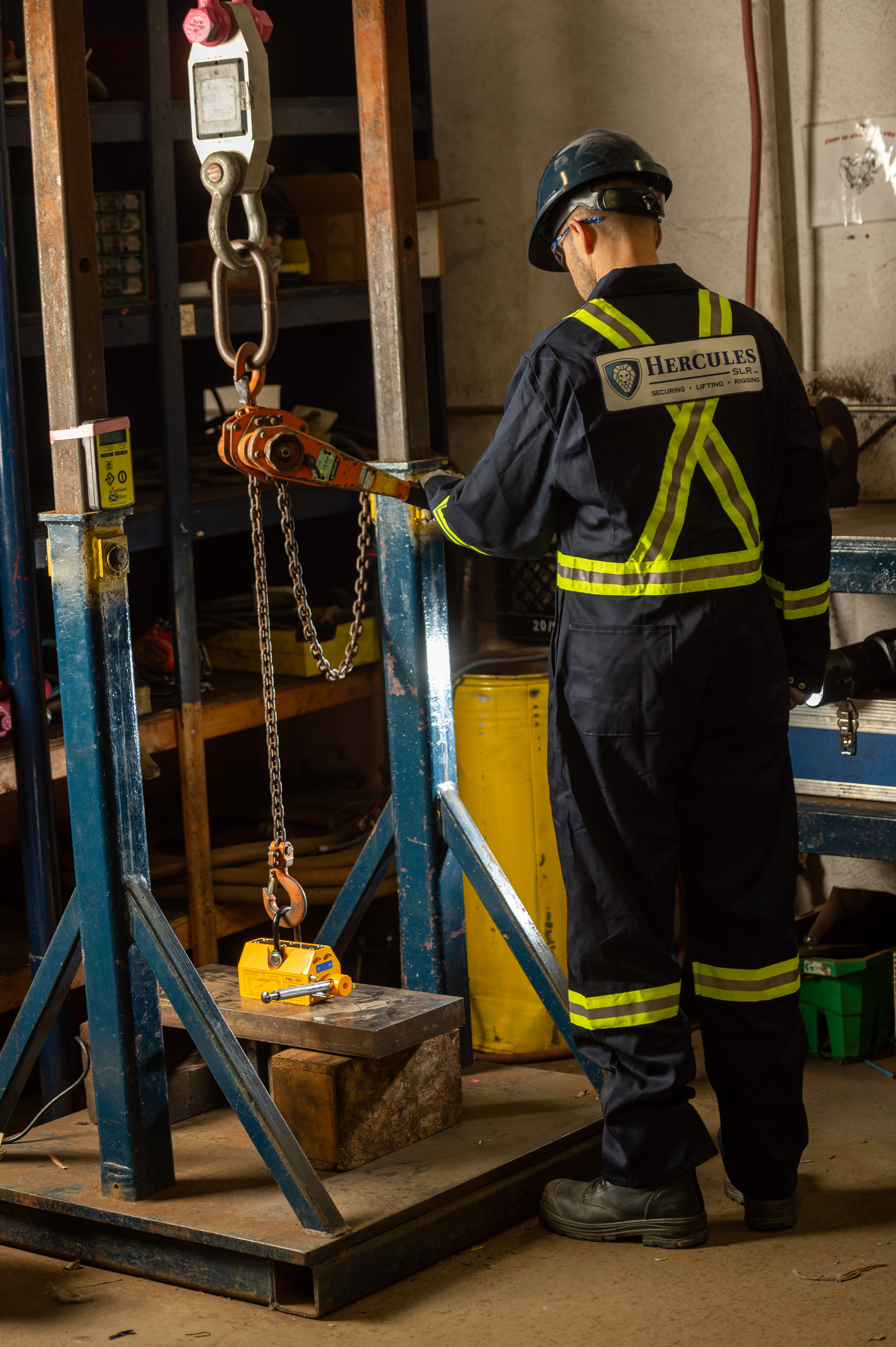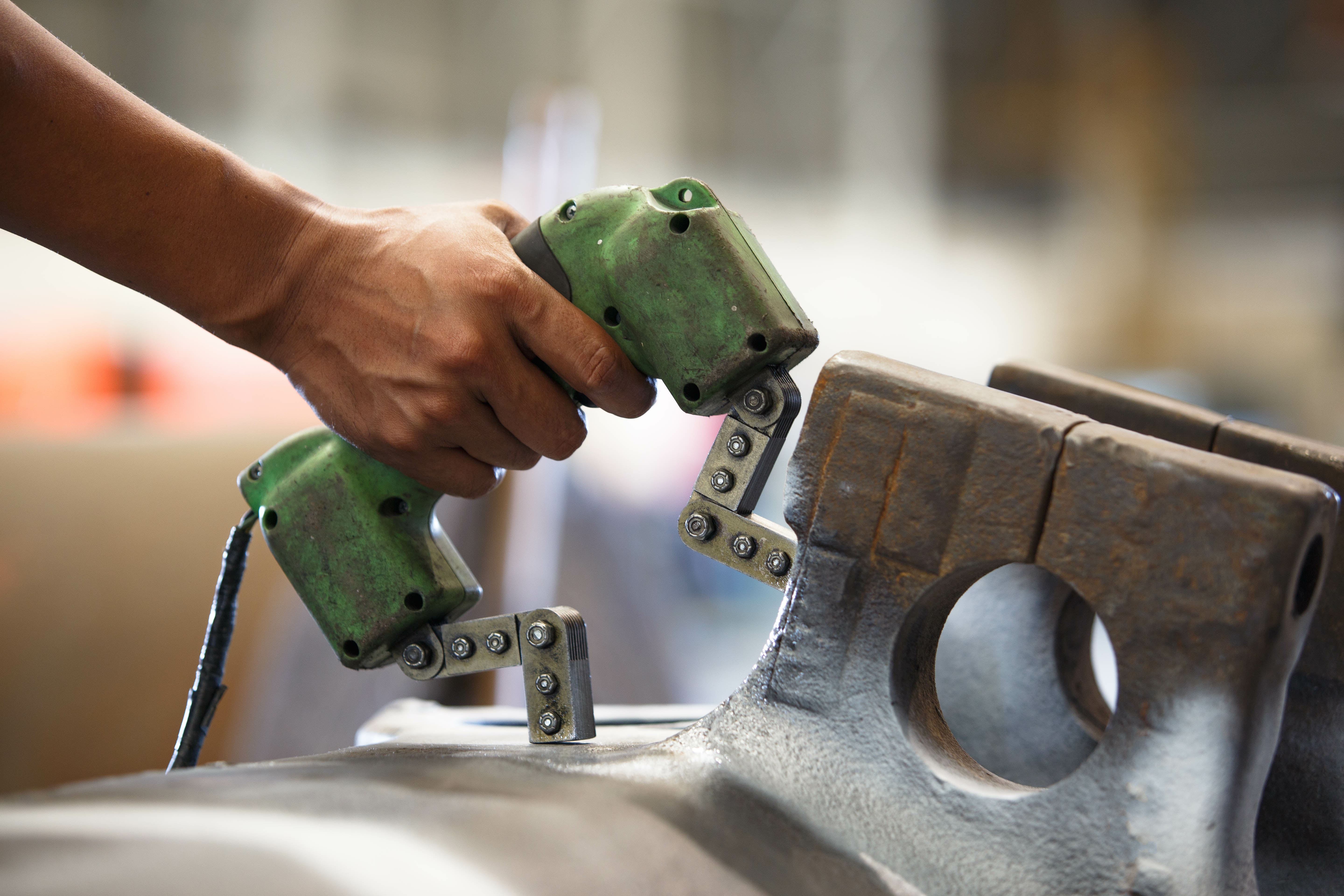Rigging Testing: Methods and Importance
Rigging Testing: Methods and Importance
In the world of construction, manufacturing, and heavy industry, the safety and reliability of equipment are paramount. Rigging testing, load testing, break testing, and non-destructive testing are crucial processes that ensure equipment can handle the demands placed upon them without failure. This blog will explore these different types of testing, the equipment used, and the importance of regular testing and servicing.
Rigging Testing
Rigging testing involves evaluating the components of lifting and hoisting equipment such as slings, chains, ropes, and lifting devices. The primary goal is to ensure these components can safely handle the loads they are intended to lift.
Types of Rigging Testing
- Visual Inspections: The first step in rigging testing involves a thorough visual inspection to identify any signs of wear, corrosion, or damage.

- Magnetic Particle Inspection (MPI): This non-destructive testing method detects surface and slightly subsurface discontinuities in ferromagnetic materials.
- Ultrasonic Testing (UT): This non-destructive testing technique uses high-frequency sound waves to detect internal flaws or inconsistencies in materials.
- Dye Penetrant Testing (DPT): A non-destructive testing liquid dye is applied to the surface of the material, which then penetrates any cracks or defects, making them visible under ultraviolet light.
- Load Testing: Load testing evaluates the performance of lifting equipment under controlled conditions to ensure it can handle the specified load. There are two main types of load testing: horizontal and vertical.
- Horizontal Load Testing: Horizontal load testing is typically used for equipment that moves loads horizontally, such as cranes and hoists. The testing process involves applying a specified load to the equipment and measuring its performance.
- Vertical Load Testing: Vertical load testing, on the other hand, is used for equipment that lifts loads vertically, such as elevators and winches. The equipment is subjected to a specified load, and its lifting capacity and performance are evaluated.
Equipment Used in Load Testing
- Load Cells: These devices measure the force or load applied during testing, providing precise data on the weight and stress the equipment can handle.
- Water Bags: These are used as test weights, especially for cranes and other lifting equipment. Water bags can be filled to specific weights, making them highly versatile and practical for load testing in various environments.
- Test Weights: Known weights are used to apply a specific load to the equipment being tested, ensuring accurate measurements and assessments.
Break Testing
Break testing involves applying loads to a component or material until it fails. This type of testing is crucial for understanding the maximum load capacity and the failure point of materials.
Horizontal and Vertical Break Testing
- Horizontal Break Testing: Used for components that will experience horizontal forces. This could include the break testing of cables, slings, and other horizontal load-bearing equipment.
- Vertical Break Testing: Used for components subjected to vertical forces, such as lifting chains and ropes.
Equipment Used in Break Testing
- Tensile Test Machines: These machines apply tension to the material until it breaks, recording the force applied and the point of failure.
- Compression Test Machines: Used to apply compressive force until the material fails, important for understanding the compressive strength of materials.
Non-Destructive Testing (NDT)
- Non-destructive testing (NDT) is a method used to evaluate the properties of a material, component, or system without causing damage. NDT is crucial in identifying potential issues before they lead to failure.

Types of Non-Destructive Testing
- Radiographic Testing (RT): Uses X-rays or gamma rays to view the internal structure of a component.
- Ultrasonic Testing (UT): High-frequency sound waves are used to detect internal flaws.
- Magnetic Particle Inspection (MPI): Detects surface and near-surface discontinuities in ferromagnetic materials.
- EddyCurrent Testing (ECT): Uses electromagnetic induction to detect cracks and flaws in conductive materials.
- Liquid Penetrant Testing (LPT): A dye is applied to the surface, which penetrates cracks and is then made visible.
Importance of Testing and Servicing
Regular testing and servicing of rigging and lifting equipment are required and vital for several reasons:
Safety: Ensures the safety of operators and other personnel by identifying and rectifying potential hazards.
Compliance: Meets regulatory and industry standards, avoiding legal and financial penalties.
Performance: Maintains the efficiency and performance of equipment, preventing costly downtime.
Longevity: Extends the lifespan of equipment by identifying issues before they become severe.
Facts and Stats
- According to the Canadian Centre for Occupational Health and Safety (CCOHS), lifting equipment failures are a significant cause of workplace injuries in Canada, emphasizing the need for regular inspections and maintenance.
- Regular maintenance and testing can reduce the likelihood of equipment failure by up to 70%.
- Non-destructive testing (NDT) is used in over 80% of maintenance checks in industries such as aerospace and nuclear power due to its effectiveness in detecting hidden flaws.
Conclusion
Rigging testing, load testing, break testing, and non-destructive testing are essential processes in ensuring the safety, reliability, and performance of lifting and rigging equipment. By understanding the different types of testing and the equipment used, industries can better prepare and maintain their systems, ultimately leading to safer and more efficient operations. Regular testing and servicing not only comply with regulations but also save lives, reduce costs, and enhance the lifespan of critical equipment.
Hercules boasts dedicated rigging shops across the country, each fully equipped to meet all your equipment testing requirements. These state-of-the-art facilities are staffed by experienced professionals who specialize in rigging testing, load testing, break testing, and non-destructive testing. As part of the comprehensive service offerings, Hercules ensures that every piece of equipment undergoes rigorous inspection and testing to guarantee safety and reliability.
Moreover, Boomer NDT, a leading provider of non-destructive testing services, is proudly part of the Hercules Group of Companies. This collaboration ensures that clients receive premium quality testing solutions backed by extensive expertise and cutting-edge technology, making Hercules a one-stop destination for all rigging and equipment testing needs.
——————————————————————————————————————————————
The Hercules Group of Companies encompasses a wide portfolio of products and services across 7 diverse companies.


%202023.png)
